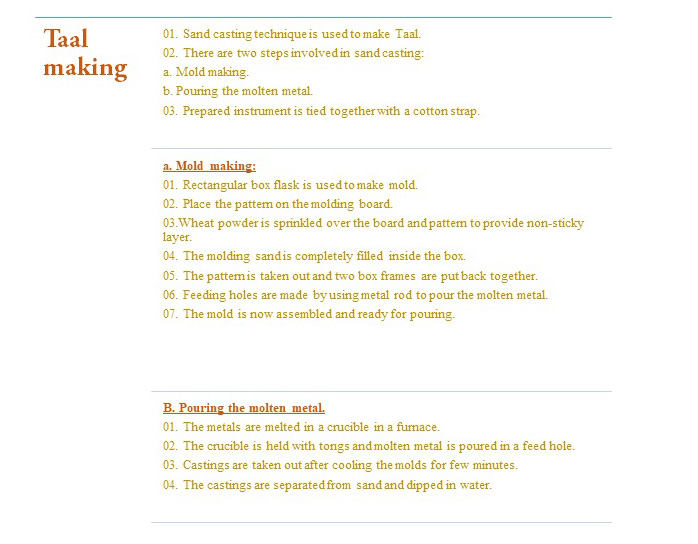Design Resource
Taal Making - Ahmednagar, Maharashtra
Musical Instrument Making
by
Prof. Bibhudutta Baral and Srikanth B.
A Taal making is put through a sand casting method performed to solidify metal into a particular shape. Firstly a box flask is used to make a mold of Taal shape. Here the box flask is a rectangular structure with only frames and no top or bottom, made up of two parts: a cope and a drag. Placing the drag on the board, the wheat powder is sprinkled over to establish a non-sticky layer. Sand is then filled into the pattern and drag, packing them completely, followed by proper hitting with hand hammers. To have an opening for pouring molten metal, holes are created at this stage in the drag to the full depth of the drag as well as the flask. The finished drag flask is now rolled over to the bottom board exposing the pattern. Again wheat flour is sprinkled all over them. The same steps are followed for cope similarly and once done the pattern is removed from the freshly designed cope and drag. Likewise, many molds are made ready and assembled for large-scale production. Once the mold is ready, metal pieces and wires are placed into a crucible in a burning furnace to melt it at high temperatures. Next, this molten metal in the crucible is carried towards the mold with the help of tongs and poured through the feed hole. After the substance cools and solidifies, its casting is separated from the mold and dipped into the water. A pair of casted shapes is then tied with a cotton strap with the help of a big nail to make a handle for the Taal.
Flowchart:







































